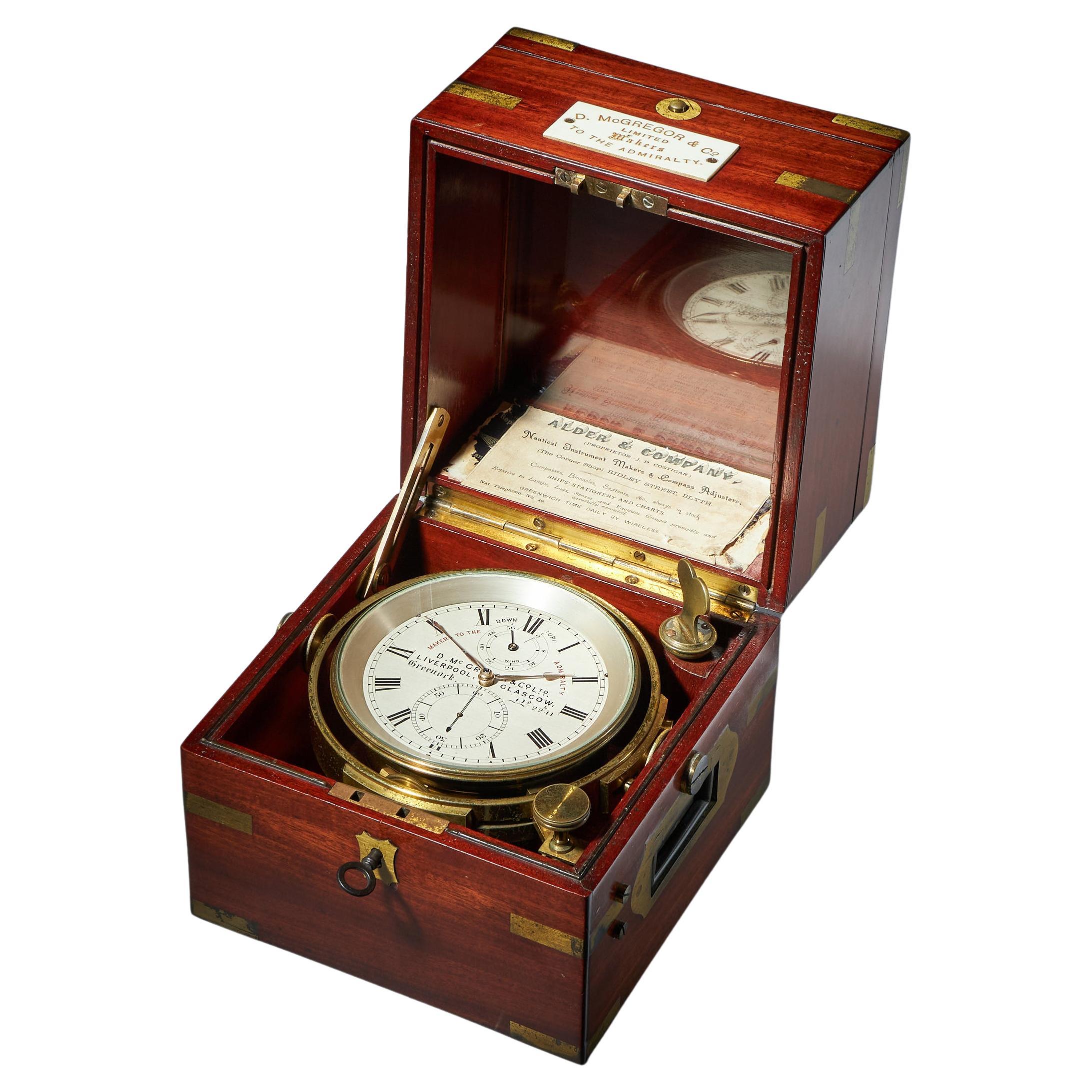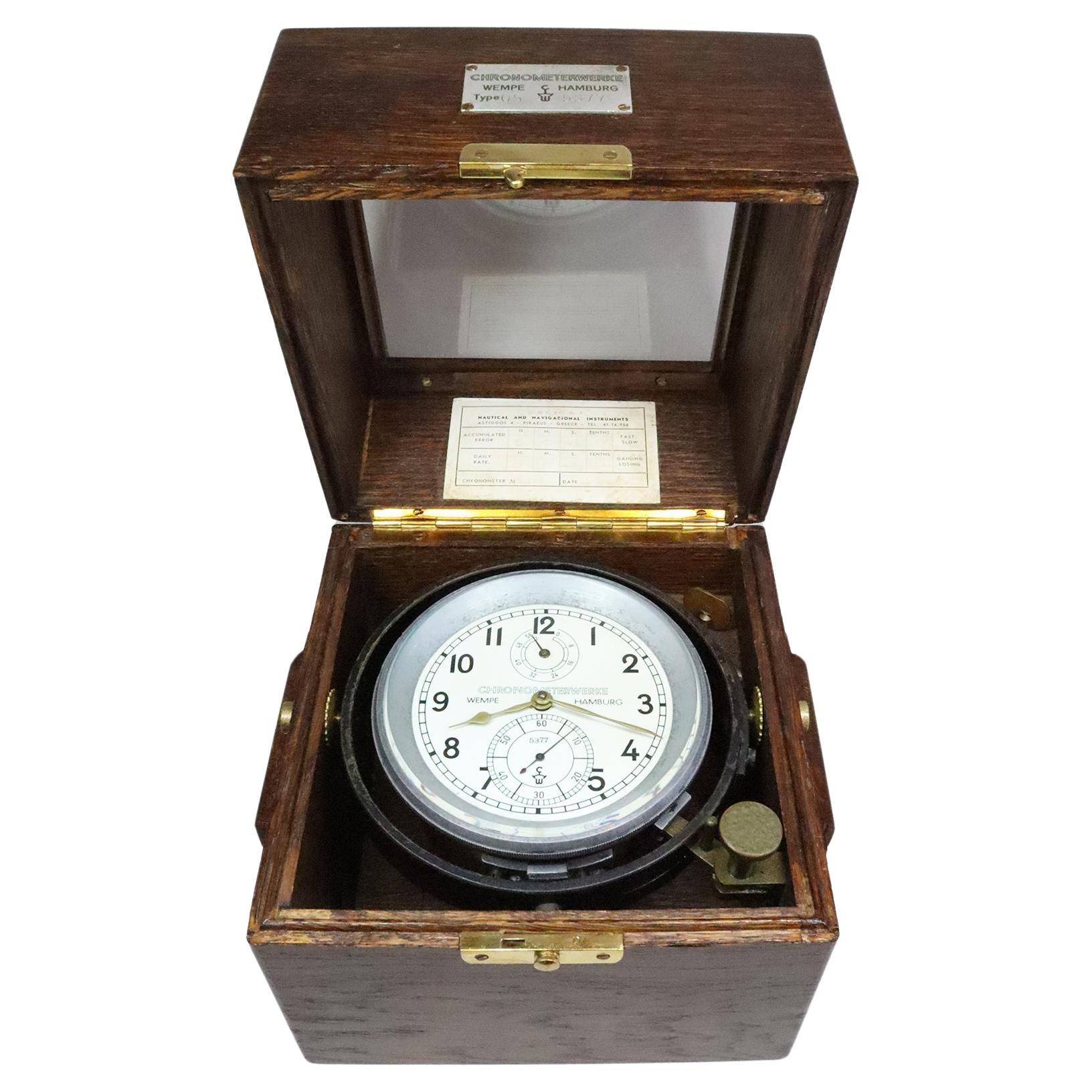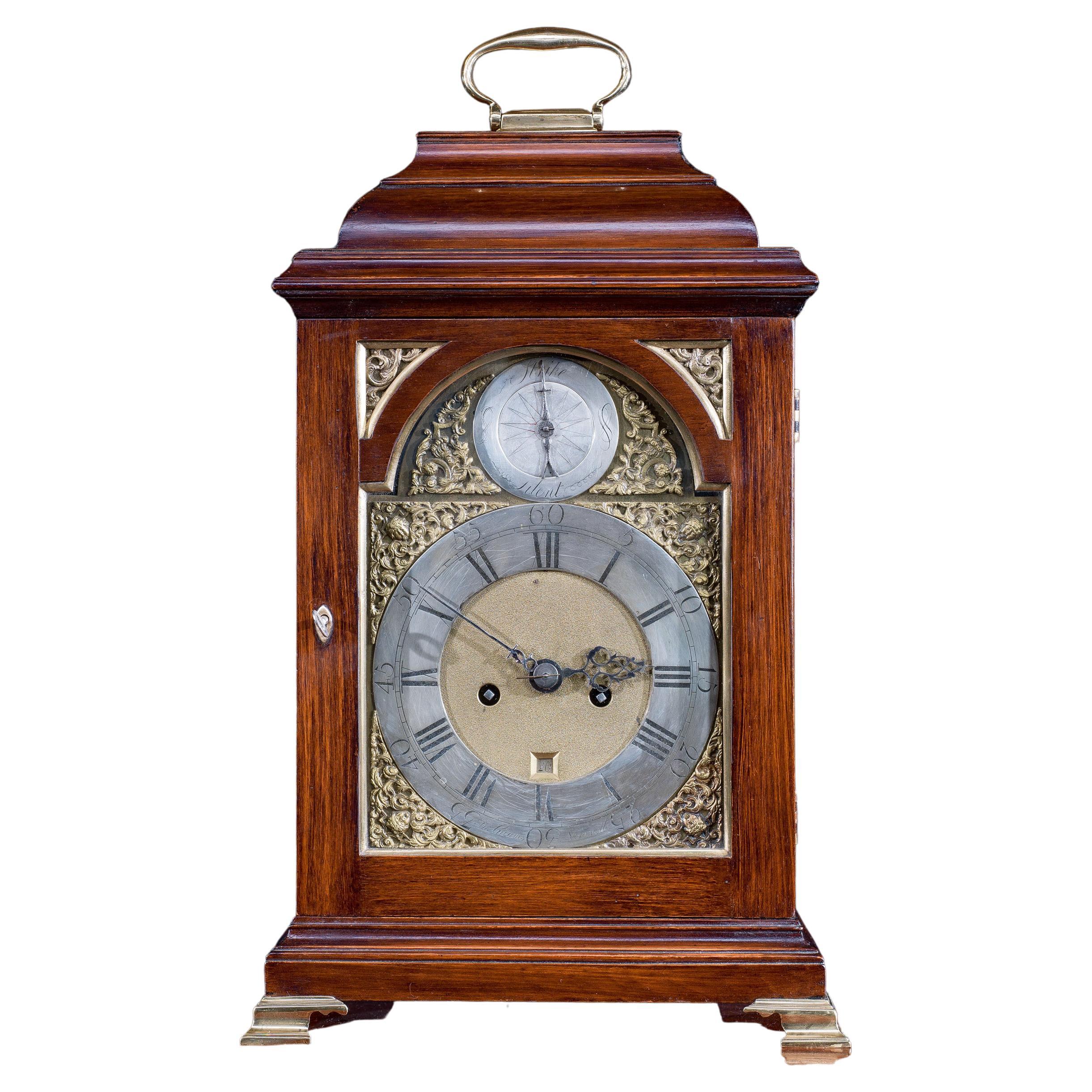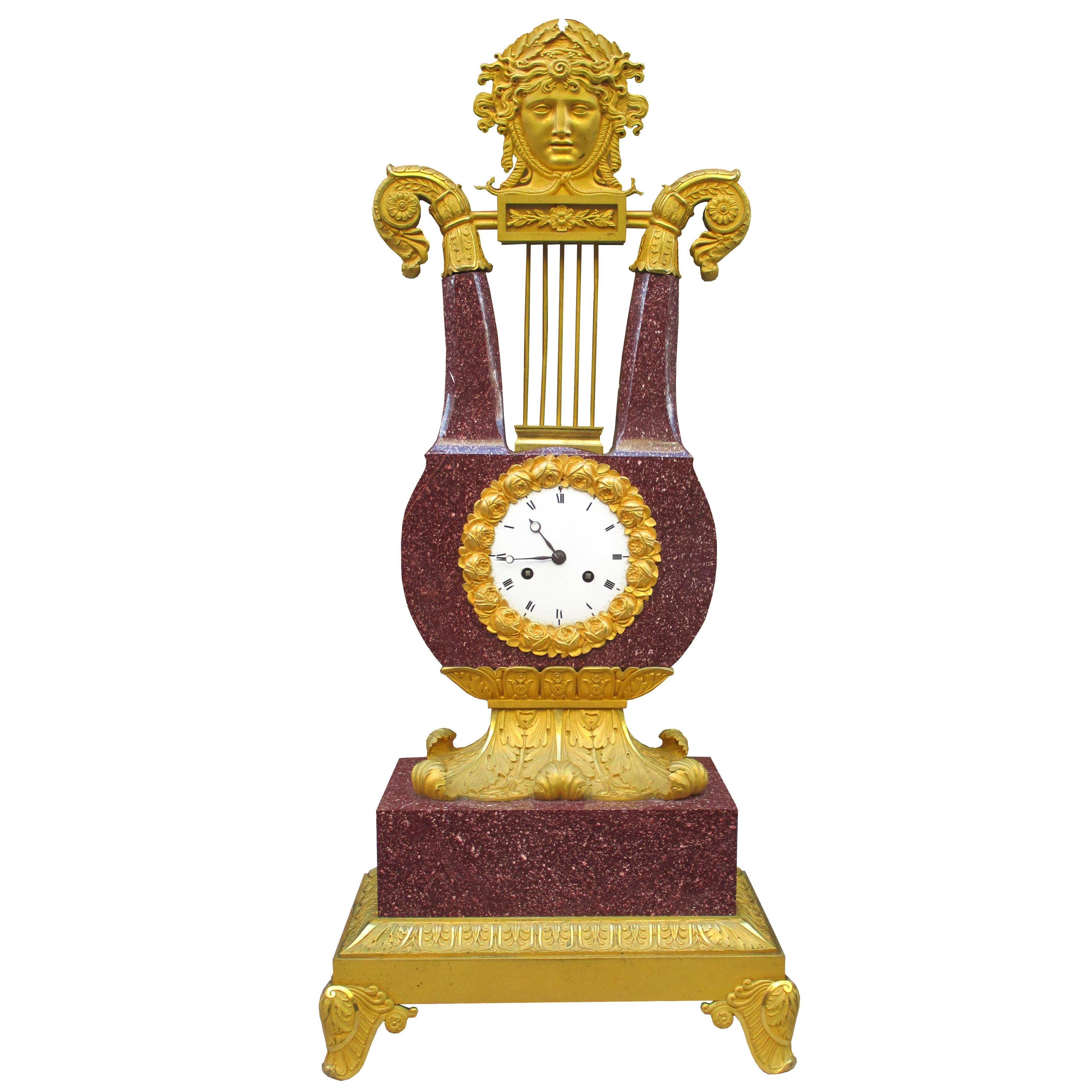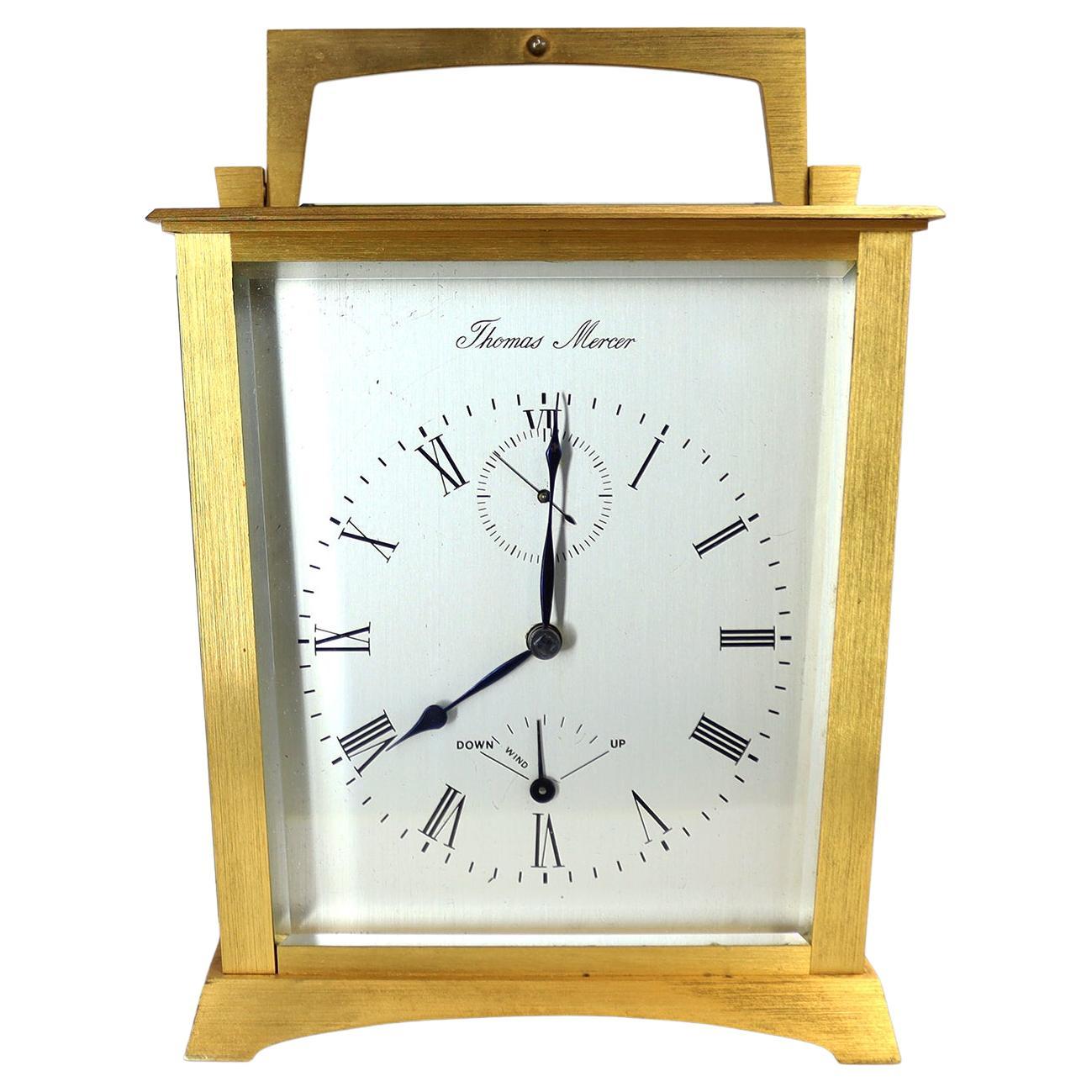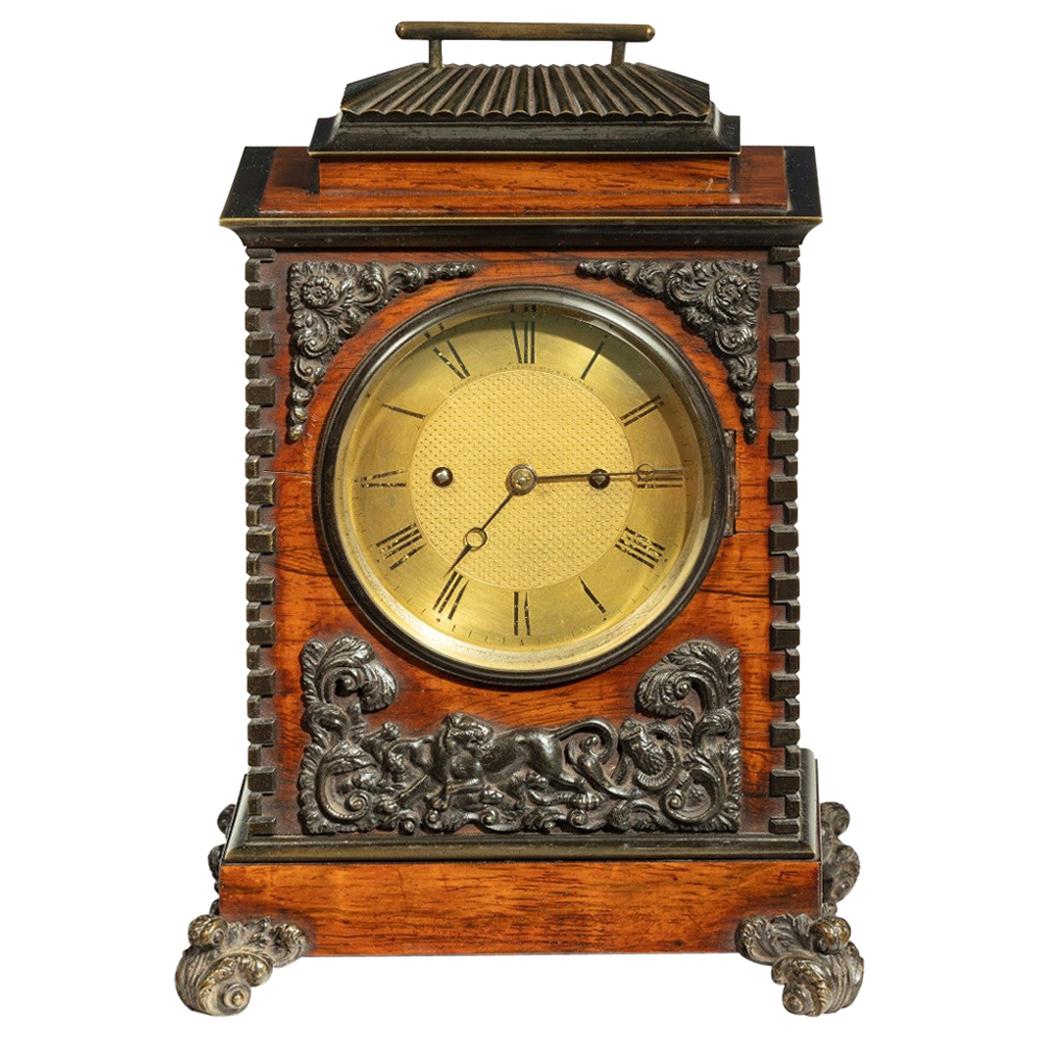Items Similar to Fine Two-Day Marine Chronometer Signed Charles Frodsham
Want more images or videos?
Request additional images or videos from the seller
1 of 13
Fine Two-Day Marine Chronometer Signed Charles Frodsham
About the Item
A Sturdy English Two-Day Marine Chronometer Made by the Renowned Maker Charles Frodsham, c. 1860
A classic expertly produced 19th century English chronometer in a three-tier rosewood case, made c. 1860. The typically brass bound case consists of a lower and a glazed upper part, as well as a top lid. The lower part has two drop handles to the sides, while the front has a lock and key with an inlaid brass escutcheon. In the front of the upper part is a brass button to lock the top lid, as well as a circular bone plaque inscribed as follows: CHAs FRODSHAM 84 Strand LONDON No 2819. The movement is situated in a gimballed brass bowl, which can be secured for transport purposes by a turnable handle in the bottom right corner of the case. The 4" silvered dial is protected by a flat bevelled glass set in a brass bezel, screwed to the bowl. The top rim of the silvered inside of the bezel bears the following text ‘EXPOSITION UNIVERSELLE DE 1855 GRANDE MEDAILLE D’HONNEUR’. In addition, there is an original protective case, in which the chronometer can be placed to protect it from external hazards.
The maker has signed and numbered the chronometer on the silvered dial in the following manner:
CARLES FRODSHAM
84 STRAND LONDON
No 2819
The time is indicated by a fine pair of gilt brass hands on the silvered dial with a Roman chaptering, five-minute and minute divisions.
The seconds are indicated by a blued-steel hand on a separate chapter ring below the middle with Arabic ten-second, five-second and second divisions. Below the XII is up-and-down dial 0-56 (hours), indicating the state of winding.
The two-day movement is constructed between two circular plates and is driven by a spring in a spring barrel via a chain fusee. It has an Earnshaw spring detent escapement with a compensated balance and helical spring. The chronometer is wound by a special key with a ratchet to prevent winding the clock in the wrong direction. The original key can be stored in a hole in the top right corner of the case. The winding hole is covered by a large circular sprung shutter.
Dimensions: 18x17.5x18.5cm
The maker:
Charles Frodsham was born into a dynasty of clock, watch and chronometer makers on the 15 April 1810. His father William James Frodsham (1779-1850) and Hannah Lambert had ten children, five of whom were apprenticed to their father and later became horologists in their own right.
Charles was educated at Christ’s Hospital, the Bluecoat School in Newgate, London, and as a condition of the Foundation, was apprenticed at the age of fourteen to his father William. He showed early promise submitting two chronometers (numbers 1 & 2) to the 1830 Premium Trials at Greenwich, No.2 gaining the second Premium prize of £170. A further nine chronometers were then entered for trial in subsequent years, until the termination of the Premium Trials, in 1836.
By the mid-1850s Charles had established himself as one of the period’s most eminent horologists. In 1854 upon the death of Benjamin Lewis Vulliamy, he purchased the goodwill of the business and succeeded Vulliamy as Superintendent and Keeper of Her Majesty’s Clocks at Buckingham Palace. This prestigious title aided the sale of clocks, watches and chronometers worldwide, Charles having overseas representation and agents in America, France and Spain. He was a liberal supporter and judicial advisor to the societies connected with horology, being one of the founding members, and later Vice President, of the British Horological Institute in 1858, and a Liveryman of the Worshipful Company of Clockmakers, in which he served as Master in 1855 and 1862.
In the same year the Great International Exhibition was held at South Kensington, where Charles not only exhibited but was also one of the jurors. Amongst his exhibits were a month duration marine chronometer.
Charles died on the 11 January 1871 at his home at 26 Upper Bedford Place, and was buried at Highgate cemetery, London, in the family vault next to that of his father. His obituary succinctly stated that ‘during a long and honourable career, he distinguished himself by his devotion to the science of horology, which he greatly advanced, and his clever works upon the subject are regarded as authoritative by members of the trade'. The firm continued under the leadership of Charles’s son Harrison Mill Frodsham (1849–1922) and exists to the present day.
References: Tony Mercer, Chronometer Makers of the World, p. 195
Jonathan Betts, Marine Chronometers at Greenwich, Oxford, 2017
Frodsham site
- Creator:Charles Frodsham (Clockmaker)
- Dimensions:Height: 7.29 in (18.5 cm)Width: 6.97 in (17.7 cm)Depth: 7.09 in (18 cm)
- Style:Victorian (Of the Period)
- Materials and Techniques:
- Place of Origin:
- Period:
- Date of Manufacture:1860
- Condition:Wear consistent with age and use. Fantastic condition throughout, in perfect order.
- Seller Location:Oxfordshire, GB
- Reference Number:1stDibs: LU4936237964832
About the Seller
5.0
Recognized Seller
These prestigious sellers are industry leaders and represent the highest echelon for item quality and design.
1stDibs seller since 2019
20 sales on 1stDibs
Typical response time: 1 hour
Associations
LAPADA - The Association of Arts & Antiques Dealers
- ShippingRetrieving quote...Ships From: Faringdon , United Kingdom
- Return PolicyA return for this item may be initiated within 14 days of delivery.
More From This SellerView All
- Fine Scottish Two-Day Marine Chronometer Signed and Numbered D. McGregorBy D. McGregor & Co. 1Located in Oxfordshire, United KingdomA Fine Scottish Two-Day Marine Chronometer Signed and Numbered D. McGregor Glasgow No 2241, c. 1870 A classic beautifully produced 19th century Scottish chronometer in a three-tier...Category
Antique Mid-19th Century Scottish Victorian Table Clocks and Desk Clocks
MaterialsBrass
- Fine Ebonized George II Eight Day Table Clock with Dutch Striking and Trip RepLocated in Oxfordshire, United KingdomBy the highly regarded maker Andrew Prime. Andrew Prime, was apprenticed in 1725 and a member of the Clockmakers’ Company in 1736. The movement is an extremely accomplished pi...Category
Antique Early 18th Century English Georgian Table Clocks and Desk Clocks
MaterialsFruitwood
- Unusual Ribbed Eight-Day Repeating Striking Gilt-Brass Gorge Case Carriage ClockLocated in Oxfordshire, United KingdomCase The clock has a gilt-brass case which is a variation on the gorge case in that the top and bottom are ribbed, which adds to its elegance. It has bevelled glass windows on all sides so that the movement is almost entirely visible. The gilt brass platform escapement can be seen through a large rectangular window at the top. The clock is surmounted by a typically shaped carrying handle. At the back is a door giving access to the winding arbors. Movement The high-quality spring-driven eight-day movement is constructed between plates. It consists of going and striking trains, as well as alarm. The going train has an English lever...Category
Antique 19th Century French Victorian Carriage Clocks and Travel Clocks
MaterialsBrass
- 19th Century Eight-Day Miniature Gilt-Brass Carriage Clock with Original CaseLocated in Oxfordshire, United KingdomA charming late 19th century French engraved miniature oval carriage clock with original travelling case. The petite miniature oval gilt brass ...Category
Antique 19th Century French Victorian Carriage Clocks and Travel Clocks
MaterialsBrass
- George III Ebonized Eight-Day Twin Fusee Table Clock by O. HamleyLocated in Oxfordshire, United KingdomA lovely late George III single pad ebonized eight-day, twin fusee table clock with original verge escapement and rack striking by O. Hamley, circa 1800-1815. The moulded single pad ebonized domed top case with original carrying handle is raised on all four of its original ogee bracket feet onto a detailed base moulding. Gilt-brass sound frets adorn the sides and front in a 'fish scale' pattern backed with bright burgundy silk. The enameled white dial displays Roman numerals, minute and quarter-hour markers housed inside a gilt-brass bezel and domed glass, signed Hamley, Warwick Place, London. The clock features a strike/silent switch on the front dial and a repeat to the right-hand-side. The backplate has border engraving and a short pendulum. Date: 1800-1815 O. Hamley is recorded in Loomes (2006) as being active, circa 1811. He also worked at Bedford Row...Category
Antique Early 1800s English George III Table Clocks and Desk Clocks
MaterialsFruitwood
- Engraved Eight-Day Striking and Repeating Carriage Clock by Perregaux Au LocleLocated in Oxfordshire, United KingdomA superb high quality eight-day striking and repeating carriage clock, signed on the enamel dial PERREGAUX AU LOCLE, circa 1870. The superb engraved gilt gorge brass case has facetted glass panels to all sides so that the movement is almost entirely visible. The top has a large rectangular window which allows full view of the original silvered platform escapement. At the back, there is a glazed door giving access to the winding and setting arbors, the functions of which are explained indications in French. The clock is surmounted by a typically shaped carrying handle. The rectangular enamel dial has a Roman chapter ring with an outer minute track with five-minute markers. The time is indicated by a fine pair of blued-steel fleur-de-lys hands. Below is a smaller subsidiary Arabic ring...Category
Antique 19th Century French Neoclassical Carriage Clocks and Travel Clocks
MaterialsBrass
You May Also Like
- Marine Chronometer By WempeLocated in Amersham, GBA Chronometerwerke Hamburg type 5 two day marine chronometer by Wempe numbered 5077. The free-sprung spotted movement with blued steel helical hairspring to a cut and compensated bim...Category
Vintage 1950s German Mid-Century Modern Carriage Clocks and Travel Clocks
MaterialsBrass, Steel
- Fine Georgian Eight Day Bracket ClockLocated in London, GBA fine Georgian walnut bracket clock by John Greaves of Newcastle (born c.1725 and active between 1745-94) with an eight day five pillar twin train fusee movement and anchor escapeme...Category
Antique Mid-18th Century English George III Mantel Clocks
MaterialsWalnut
- Very Fine Charles X Imperial Porphyry Lyre ClockLocated in New York, NYAn important Charles X imperial porphyry lyre clock. Crafted from red porphyry and ormolu. Movement signed and dated 1828. Clockworks have been...Category
Antique Early 19th Century French Charles X Table Clocks and Desk Clocks
MaterialsPorphyry, Bronze
- Thomas Mercer Chronometer Carriage TimepieceBy Thomas MercerLocated in Amersham, GBAn English gilt brass chronometer carriage timepiece with original travelling case, key and bill of sale. The grained gilt tapering case has a folding handle with bevelled glass panel to the top, bevelled glass panels to the sides and a solid rear plate with hand setting function and start/stop lever, signed Thomas Mercer and numbered 1184, dating from 1974 The silvered dial signed Thomas Mercer, with Roman numerals, subsidiary seconds dial and a state of wind indicator. Blued steel hands. The substantial eight day chain fusee movement with maintaining power, Earnshaw type detent escapement with a free-sprung palladium helical balance spring and heavy bimetallic balance. The original black leather tooled travelling case with lift out front cover is lined in blue velvet and the original safety winding key is stored in the top. Thomas Mercer was founded in 1858, and became one of the greatest chronometer makers of the 19th and 20th centuries. Ernest Shakleton used a Mercer chronometer on the 1914 Imperial Trans-Antartic Expedition, after the Endurance became trapped and destroyed in the pack ice, he heroically journeyed in a whaleboat, the James Caird, to South Georgia to get help for his stranded compatriots. He navigated with a Thomas Mercer chronometer...Category
Vintage 1970s British Mid-Century Modern Carriage Clocks and Travel Clocks
MaterialsBrass
- William IV Rosewood and Bronze Bracket Clock by Frodsham 185 & BakerLocated in Lymington, HampshireWilliam IV rosewood and bronze bracket clock by Frodsham 185 & Baker, the brass eight-day movement striking on a bell, the backplate numbered ‘292’, the circular brass dial with roman numerals and an engine turned centre, signed ‘Frodsham & Baker Gracechurch St. London‘, in an architectural case with applied panels, the front decorated with a lion and foliage, the corners with quoins, the sides with scrolling leaves and palmettes, with a fan pagoda top with a retractable oriental gateway handle, on leaf scroll feet, with pendulum, winding key and case key. English, circa 1830. William Frodsham was an established London clockmaker. One of his sons, John Frodsham (1785-1849), went into partnership with Baker to form ‘Frodsham and Baker’ in 1809’. They were chronometer makers to the Admiralty and also made wall...Category
Antique 1830s English Mantel Clocks
MaterialsBronze
- Fine Antique George III Inlaid Mahogany Eight Day Longcase ClockLocated in Suffolk, GBFine antique George III inlaid mahogany eight day longcase clock having a shaped swan neck pediment above an arched glass and mahogany door flanked by reeded columns, satinwood inlai...Category
Antique 19th Century English George III Grandfather Clocks and Longcase ...
MaterialsMahogany
Recently Viewed
View AllMore Ways To Browse
Antique Victorian Shutters
Vulliamy Benjamin
Victorian Shutters
Antique Keeper Ring
Beveled Glass Watch Case
Bezel Promise Ring
Large Glass Top Desk
Desk Clocks Only
Desk Ring Handles
1810 Clock French
Apprentice Desk
Oxford Desk
Atmos Vendome
Battery Operated Alarm Clock
17th Century Chippendale Desk
Patek Philippe Grand Celeste
Kartell Light Air
Kienzle 8
